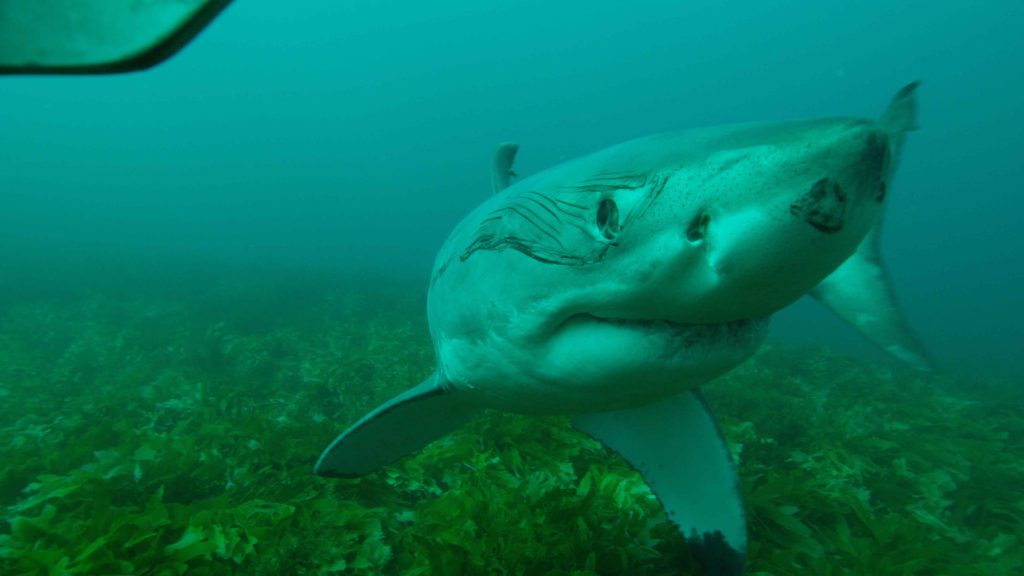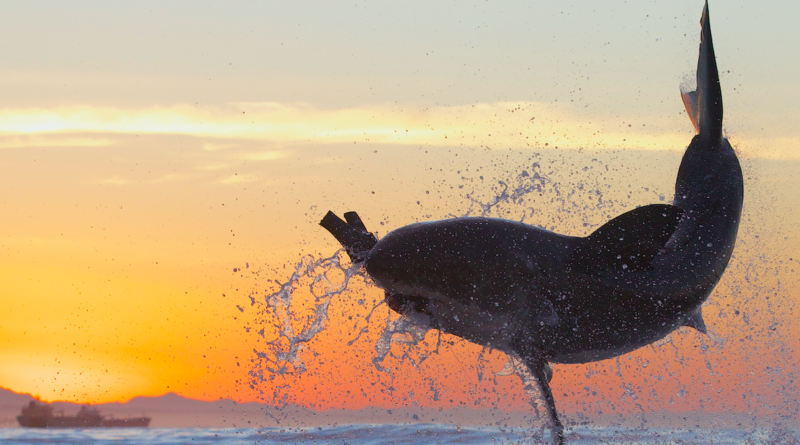INTERVIEW: Shark Week’s Jeff Kurr on his journey from ‘Air Jaws’ to Bird Island
Photo: Shark Week features all things shark, and this year’s programming airs on both Discovery and discovery+. Photo courtesy of Discovery / Provided by press site with permission.
Shark Week has returned to Discovery, and this year, the finned entertainment is also streaming on discovery+. This annual festival of all things shark brings in many viewers who are ready to learn about these creatures of the sea — creatures that often elicit fear and simultaneous misunderstanding. It’s up to the hosts, cinematographers and team members at Discovery to dispel some rumors and show the truth behind these sharp-toothed fish.
One of the mainstays of Shark Week, which airs this week, is Jeff Kurr, the filmmaker behind the popular Air Jaws franchise. This year, his producing finesee is represented on Air Jaws: Going for Gold (now streaming), Jaws Awakens: Phred vs. Slash (now streaming) and Mega Jaws of Bird Island (airing Thursday, July 15 at 10 p.m. and streaming).
Kurr has been capturing these creatures over the course of 44 TV specials since 1991. The Emmy nominee has also appeared on numerous TV talk shows and utilized a number of cutting-edge camera techniques, including night vision, thermal imaging and remote operated submersibles — all with the goal of capturing the sharks in their natural habitats. Oh, he’s also used robotic seals and was the first person to capture in slow motion white sharks breaching the waters.
Recently Kurr exchanged emails with Hollywood Soapbox about this year’s Shark Week. Questions and answers have been slightly edited for style.
What were the early days of your Shark Week assignments like?
I started doing Shark Week way back in 1991, when sharks were almost universally feared. For many people, Jaws was the only frame of reference that people had about sharks. So, the focus back then was on shark-human interaction. We looked at what species of shark were most dangerous, how attacks could be prevented and told stories of attack survival. And, at the same time we learned that sharks weren’t the man-eaters we thought they were.
How much has the job changed over the years?
Technology has radically changed the way we film sharks. We can track them in our local waters and even globally. Instead of catching a shark and cutting it open, we can take a swab of their DNA and learn so much about their life histories. We now know where they go, what they do and how they live; so the stories we tell go far beyond just attacks on humans. And the cameras! I used to go on location with 50 or 60 cases of gear. Now, thanks to tech, we only take a couple of cases, and we’re shooting 4K, 6K, 8K resolution, with amazing drones and miniature cameras we can mount anywhere and everywhere. The sharks look spectacular, and we’re not breaking our backs lugging tons of cases through airports!
What are you most excited for audience members to experience during this year’s Shark Week?
With 45 hours of programming, Shark Week has something for everyone! From hardcore shark junkies to casual viewers, we’re entertaining and educating a really diverse audience with this event. Of course, I’m partial to the shows I produced — Air Jaws: Going for Gold, the 14th installment of Shark Week’s longest running and most successful franchise. And there’s Jaws Awakens: Phred vs. Slash, which we shot in New Zealand, featuring two of the biggest great whites you’ll ever see, in a battle for dominance. And then, there’s Mega Jaws of Bird Island, which documents our search for the last of the big female “breeders” in South African waters.
What’s the environment for sharks like around Bird Island?
Bird Island is the perfect nursery ground for the young great white sharks that grow up there. You’ve got several thousand Cape fur seals to feed on, plus plenty of snacks in the form of sting rays, fish and even smaller shark species. Plus, the water is warm to help young sharks grow fast. It’s also a fairly safe place for white sharks to give birth. That’s as long as the orcas don’t show up. Because as we discover, orcas love to eat great white sharks!
How different is underwater cinematography from above-water cinematography?
Very different skill sets involved in shooting underwater vs. topside. My underwater guys are hardcore divers and shark behaviorists who can handle going face to face with a 20-foot great white shark. My topside guys are creative artists and make everything look great, which isn’t easy on a rocking boat. As for me, I’m one of the only dinosaurs left who’s done both.
Are you afraid of sharks?
I work almost exclusively with great white sharks in baited situations, usually far away from land. It’s dangerous work, but all of us who get involved are aware of the risks. I have a healthy respect for these animals, knowing they’re the largest predatory fish in the oceans, but I don’t fear them. Maybe, my biggest fear is going on location and discovering that sharks have all been fished out, poached, even killed by orcas. This is happening now in South Africa — and that’s scary!
By John Soltes / Publisher / John@HollywoodSoapbox.com
Shark Week continues on Discovery and discovery+. Click here for more information.


